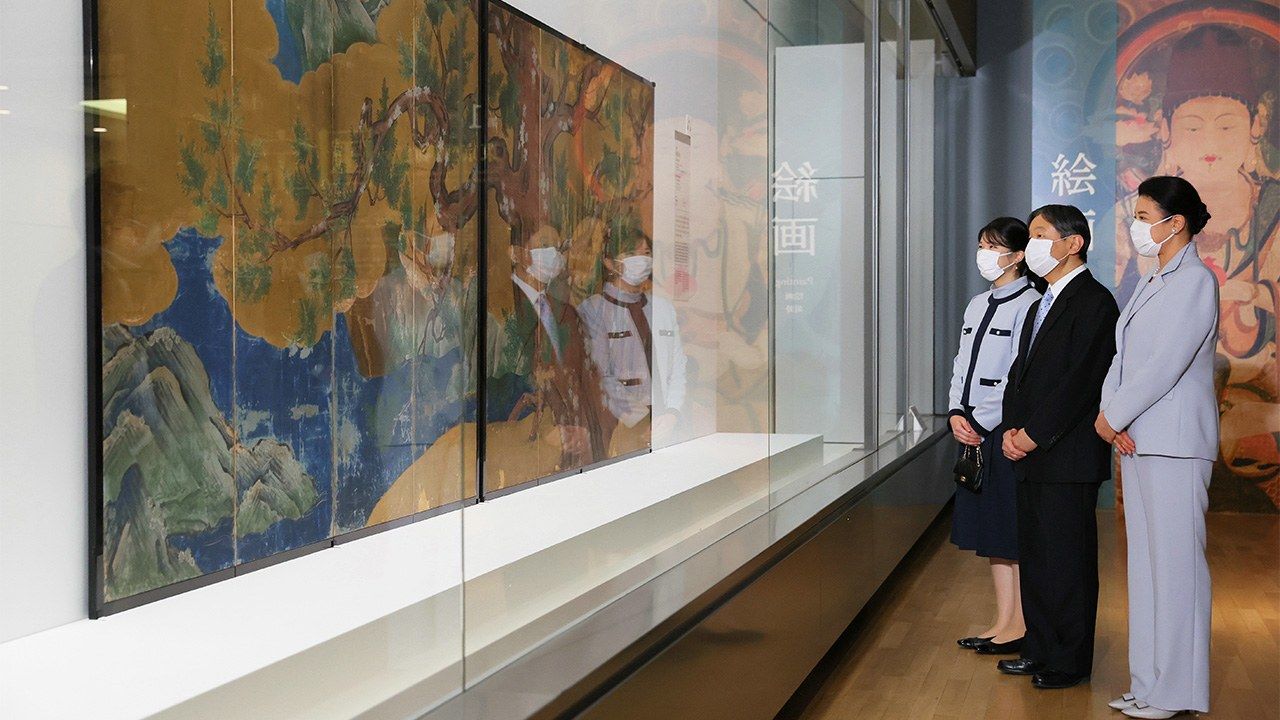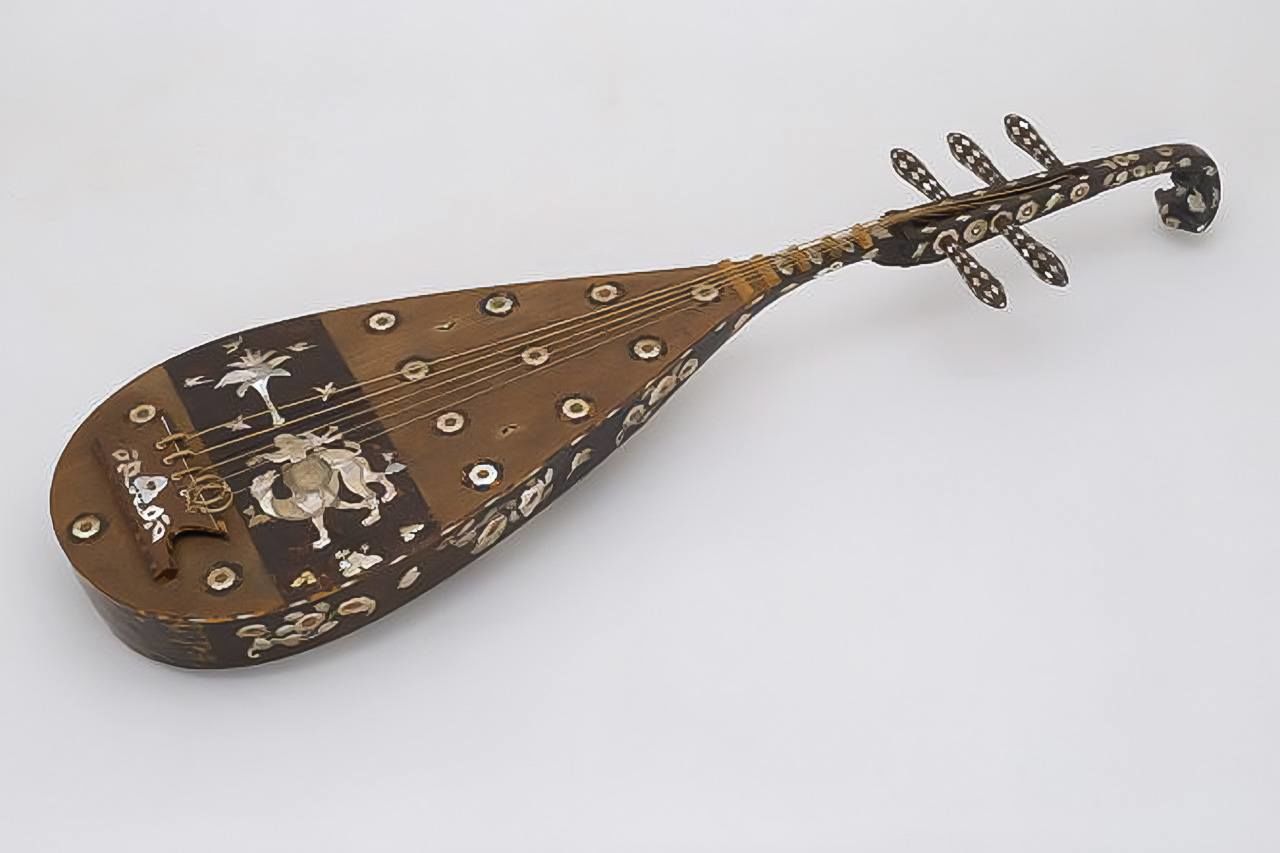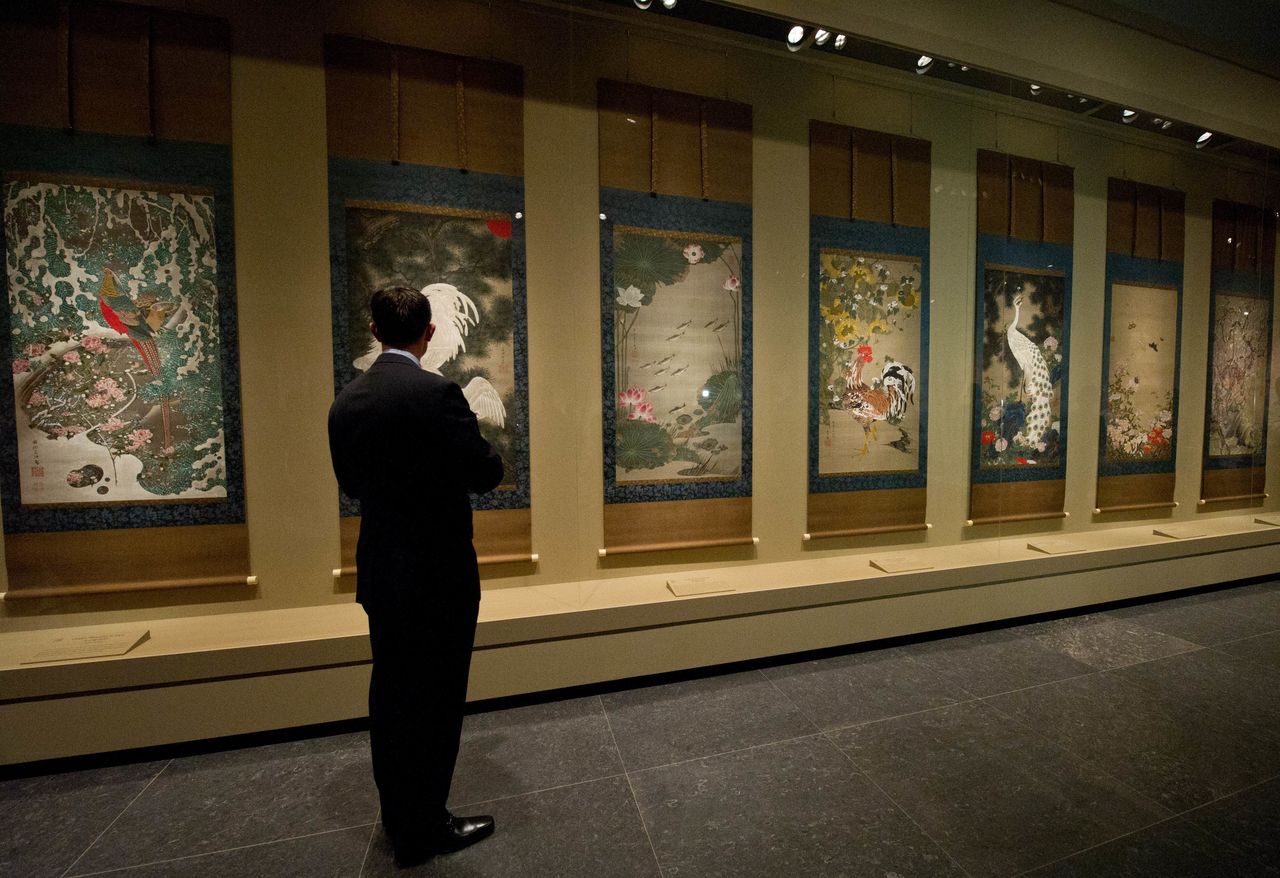
Japan’s National Treasures: Balancing Cultural Preservation with Promoting Tourism
Culture Society Art History- English
- 日本語
- 简体字
- 繁體字
- Français
- Español
- العربية
- Русский
Irreplaceable Treasures of the Nation
The university where I teach lies inside Tokyo’s Ueno Park, which is home to several important museums and art galleries. In recent months, school trips and foreign tourists have started to return after the enforced quiet of the COVID-19 pandemic.
The term “inbound tourism” became a key term in the Japanese government’s cultural policy before the pandemic. At the time, the question of how to attract more visitors to museums and similar facilities was a major policy issue. Rapid progress was made in translating museum labels and similar information into English and other languages. I remember noticing that these labels often featured the term “national treasure,” as a way of underlining cultural importance. In many cases, the designation must have helped to inspire a sense of pride in Japanese visitors as well, and given them an additional incentive to seek out these artworks.
But I don’t remember ever having seen similar nomenclature used in museums in Western countries. At least among the world’s leading economies, I do not think any other country uses an official selection of highlights from the national patrimony, chosen by the national government, as part of its tourism policy. What is the system behind this category of “national treasures,” and where did it emerge?
The current Law for the Protection of Cultural Properties was passed in 1950. Article 27 stipulates that the minister of education, culture, sports, science and technology may designate an important cultural asset as an important cultural property, and goes on to provide that: “Among important cultural properties, the minister may designate as national treasures objects of a high value from the viewpoint of world culture, as irreplaceable treasures of the nation.”
Of course, it is not left to the whims of the minister of the day to choose which artworks deserve to become national treasures. Researchers at the Agency for Cultural Affairs draw up a list of candidates; this list is then discussed by the Council of Cultural Affairs, a panel of experts from various fields of art, architecture, and cultural history, who eventually make their recommendations to the minister. In this way, each year the number of national treasures steadily increases.
A Useful Cachet
Designating a work as a national treasure aims to protect the work in question from deterioration, dispersal, or loss to the country by being sold overseas. Once an artwork has been so designated, it must be looked after in an appropriate manner, and formal permission must be sought from the culture minister before the treasure can be moved. And no national treasure may be sold overseas.
In recent years, the government’s policy has begun to shift from an emphasis solely on protecting cultural assets to a new strategy that looks to harness the economic and soft power potential of these cultural assets by increasing opportunities for them to appear in exhibitions. For many years, there were strict regulations on how long national treasures and other cultural properties could be put on public display: generally no more than 60 days a year. The Agency for Cultural Affairs revised these regulations in 2018, as part of efforts to strike a better balance between the twin aims of protecting the nation’s cultural assets and harnessing their economic potential. Under the new standards, oil paintings and artworks made from durable materials like stone and metal can now be shown for up to 150 days a year.
It is generally recognized that the cachet of the “national treasure” designation is useful in a number of ways, from regional community regeneration to tourism and efforts to boost Japan’s international profile.
The Tokyo National Museum management took the highly unusual decision to extend last year’s exhibition for an extra week, to allow as many visitors as possible to see the treasures. In the past, a decision like this would have been unthinkable. It was a symbolic moment in the change from preserving cultural assets to maximizing their educational and economic value.
In 2021, the subject of national treasures made the headlines when a number of pieces from the Museum of the Imperial Collections won the designation, including Dōshoku Sai-e (Colorful Realm of Living Beings) by the eighteenth-century painter Itō Jakuchū (1716–1800) and a screen painting of Karajishi-zu (Chinese Lions) by Kanō Eitoku (1543–90). The practice in the past was that artworks and other cultural properties from the imperial household collections were not eligible for consideration for national treasure status, on the reasonable grounds that they were already sufficiently well looked after and that there was no danger that they might become dispersed or sold overseas. The fact that a decision was taken to recognize these pieces as national treasures demonstrates the shift that is taking place in the government’s thinking as it looks to build on growing Japan’s reputation as a popular destination for international tourism.

Five-stringed biwa lute from shitan wood with mother-of-pearl inlay, from the collection of the Shōsōin Repository. (© Jiji (archive))
For reasons that remain unclear, only artworks from the Museum of the Imperial Collections were chosen to receive the national treasure designation. Cultural treasures from the Shōsōin Repository—also administered by the Imperial Household Agency—were not included. Treasures from this collection, including a Persian-style lacquered ewer and a five-stringed biwa lute with mother-of-pearl inlay would be immediately recognizable to millions of people around the country, since they are regularly featured in school textbooks on Japanese history. They are surely works that in anyone’s judgement would qualify as “national treasures” according to the criterion of “objects of a high value from the viewpoint of world culture that can be described as the irreplaceable treasures of the nation.” Perhaps the reason why no item from the Shōsōin collection has so far been honored with the designation is simply practical. There are around 9,000 artworks of irreplaceable value in the collection—the process of categorizing all these is likely to take time, particularly given the need for coordination between the Imperial Household Agency and the Agency for Cultural Affairs.
Cultural Defensive Strategies of the Meiji Era
Before saying anything more about the situation today, let me sketch the history of modern government policies to protect the country’s cultural assets.
The term “national treasure” (kokuhō in Japanese) was first used in the nineteenth century, in the midst of the modernizing reforms introduced by the Meiji government. The first person to use the term was Kuki Ryūichi, then head of a nationwide survey into cultural properties as chairman of a newly established government committee, and later the first director general of the Imperial Museum (now the Tokyo National Museum). In a speech in January 1889, Kuki argued for the importance of studying the history of artworks, Kuki and others like Okakura Tenshin who worked alongside him on cultural policy, had been deeply shocked by the anti-Buddhist iconoclasm (haibutsu-kishaku in Japanese) that swept the country in the early years of the Meiji era (1868–1912), leading to the destruction of countless treasures of Buddhist art. They wanted to repair as much of the damage as possible, as well as putting in place a new system for protecting the country’s cultural heritage in a manner they saw as befitting a modern state.
Thanks to their passion and hard work, in 1897 the Law for the Preservation of Ancient Shrines and Temples was passed, and the practice began of designating as “national treasures” items that were deemed “especially valuable for their historic importance or as artistic models.” This led in 1929 to the Law for the Preservation of National Treasures, which was revised after the war as the Law for the Protection of Cultural Properties, which remains in force today. One point is important to note in this context. It is sometimes said that there is hardly a piece of legislation in any area of modern Japanese law that was not modeled on a precedent from one of the Western countries. These laws for the protection of cultural properties were an exception, built up slowly by trial and error on the back of painstaking surveys. This was important, because it meant that Japan built the foundations of its standing as a cultural power with its own hands.
As can be surmised from the Kuki speech alluded to briefly above, the late nineteenth century was a challenging time for Japan culturally, and the country eventually adopted a strategy of “cultural defense” to protect its traditional heritage from international competition. As Japan fought to catch up with the Western powers diplomatically and economically, it was also desperate to put in place a system of laws that would stop the steady flow of cultural assets out of the country. At the same time, through the appropriate export of outstanding examples of Japanese arts and crafts, the government wanted to turn traditional culture into something that would contribute to Japan’s national power and prestige on the international stage.
The shift from older terms like “antiquities and ancient cultural properties” to “national treasures” took place from the late 1880s into the early 1890s. This was a period that happened to coincide with the birth of Japan as a modern nation state. During the Edo period (1603–1868), most of these cultural treasures had belonged to temples, the traditional nobility, and other private families. Designating them as “national treasures” while they remained with the same owners showed the robust nature of the government’s cultural administration, and demonstrated to the people that modern state systems were being established. That assets belonging to the collections of the imperial family were excluded from the status of national treasures made perfect sense under this system, since the whole apparatus of state was centered on the emperor and his family. The fact that a decision was taken to continue this as a “practice of long standing” when the Law for the Protection of Cultural Properties was established at the end of World War II reflects the view then that despite all the recent upheavals, the country would maintain the imperial system in a new postwar form with the emperor as a symbol of the nation.
Notable Exclusions
As of March 2023, a total of 13,377 artworks had been declared important cultural properties. Of these, 1,132 were national treasures. Is this a large number or a small one? Certainly, it represents only a small proportion of the artworks that might reasonably be designated as having “a high value from the viewpoint of world culture,” as we saw when we considered the non-inclusion of treasures from the Shōsōin collection above. But at the same time, if the number of national treasures continues to increase indefinitely, we will eventually reach a point when there simply is not enough manpower or money to handle the workload involved in taking care of the treasures.
The number of potential national treasures increases even more when you consider the fact that in my own field of modern art (defined as everything from the Meiji era to the present), not a single work has so far been designated a national treasure. The most recent artwork to have received the honor so far is Takami Senseki zō (Portrait of Takami Senseki), a painting by Watanabe Kazan, from 1837. There is one exception: the Akasaka Palace State Guest House (Geihinkan), built in 1909, which has been recognized as a national treasure for its outstanding architecture.
The original laws on protecting cultural properties were introduced between the second half of the nineteenth century and the early decades of the twentieth. At this time, a consensus existed on what the best artworks were from a period up to around the middle of the Edo period, but not yet for anything created later than the eighteenth century. It was therefore decided that recent works should be excluded from consideration. Woodblock artists like Hokusai and Hiroshige, who had been contemporaries of Watanabe Kazan, were already extremely popular overseas, where they had an important influence on the impressionists and other artists, but modernizing Japan tended to look down on ukiyo-e and the other popular arts of the Edo period, and so works by these artists were never seriously considered for a place alongside the other national treasures as recognized masterpieces of Japanese art.
By the time the new law came in after the war, more than 80 years had passed since the Meiji Restoration. Considering the dramatic changes that had taken place during this time, a number of Meiji era works were designated as “important cultural properties.” These included Kanō Hōgai’s Hibo kannon (Avalokitesvara as a Merciful Mother), Hashimoto Gahō’s Hakuun kōju (White Clouds with Autumn Leaves), and Oiran (The Courtesan) and Sake (Salmon) by Takahashi Yuichi.
The Secrets of National Important Properties is currently being held at the National Museum of Modern Art, Tokyo, until May 14. The exhibition brings together 51 (out of a total of 61) modern works that have been designated “important cultural properties,” including 17 from the permanent collection of the museum itself. Visitors can test their powers of fortune-telling as to which of the Meiji-era artworks on display will be the first to achieve the status of national treasure in the years to come.
The Future of National Treasures
In this article, I have looked at the systems in place for designating national treasures, and traced their historical background. No doubt these evolving systems of legislation have served a useful purpose in helping to protect Japan’s artistic heritage and in encouraging wider recognition for outstanding artworks among the public. But we should be wary of making a fetish of the recognition. There is a regrettable tendency sometimes to obsess over whether a given work is a “national treasure” or not, and to evaluate it based solely on this rather arbitrary criterion. Whether a piece becomes a national treasure centuries after it was made tells us nothing about the original inspiration that drove the creator to make the piece—and for the viewer, the fact that an artwork has been designated as a “national treasure” tends to encourage preconceived ideas that can prevent an objective evaluation of the work and others like it.
Let us consider one example from the artworks from the imperial household collection that were recently made national treasures. There is no question that Itō Jakuchū’s Colorful Realm of Living Beings is a wonderful series of paintings. But the value of the work does not come from its status as a national treasure. Jakuchū’s family made their living as vegetable wholesalers in a market in Kyoto. He later took the tonsure. He worked on this series of 30 hanging scrolls for a whole decade, and when it was complete donated it to the Shōkokuji temple as an offering for the salvation of his deceased father and other members of the family. The act of creation must have been an all-consuming creative and spiritual endeavor akin to prayer itself.
For many years the works were displayed in the main prayer hall at Shōkokuji as treasures of the temple. They were donated to the imperial household only in 1889, as the temple struggled to recover from damage sustained during the anti-Buddhist nationalist fervor of the post-Restoration years. The temple received ¥10,000 in appreciation for its donation, and it was thanks to this money that Shōkokuji was able to recover from the disasters of the haibutsu-kishaku frenzy. The scrolls later became known as imperial household treasures (gyobutsu) and were occasionally shown to the public. The great Meiji literary figure Natsume Sōseki saw the scrolls at one of these exhibitions and wrote about Jakuchū’s paintings in several of his works.
But it is only really in the past 20 years or so that Jakuchū has become such a popular artist with the wider public in Japan. We should not forget that it was thanks to the efforts of the Museum of the Imperial Collections in looking after the works and exhibiting them to the public at intervals that the value of these priceless works has eventually been shared with so many people.

In 2012, Itō Jakuchū’s series of 30 scrolls Colorful Realm of Living Beings was exhibited at the National Gallery of Art in Washington, DC. This was the first time the series had been shown in its entirety outside Japan. Photograph taken on March 26, 2012. (© AFP/Jiji)
Despite the many benefits of the system, I cannot help feeling certain reservations about the whole concept of “national treasures.” Surely the “irreplaceable treasures of the nation” are not limited only to those works that have been officially recognized as masterpieces by law. The government has a responsibility to develop policies that will provide a safety net not only for a small number of national treasures but for all of the nation’s cultural and artistic patrimony. Similarly, as citizens, we should not be satisfied with the national treasures chosen on our behalf by a panel of government experts. We should seek out our own “people’s treasures” and cherish and preserve them for future generations. This approach, I believe, will bring us closer to the kind of cultural power that suits the needs of the increasingly diverse world we live in today.
(Banner photo: Emperor Naruhito and Empress Masako visit the Tokyo National Museum with their daughter, Princess Aiko, to see the 150th Anniversary Special Exhibition of national treasures on November 24, 2022. © Jiji.)
national treasure arts Agency for Cultural Affairs inbound museums cultural properties